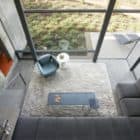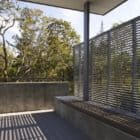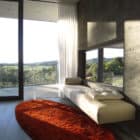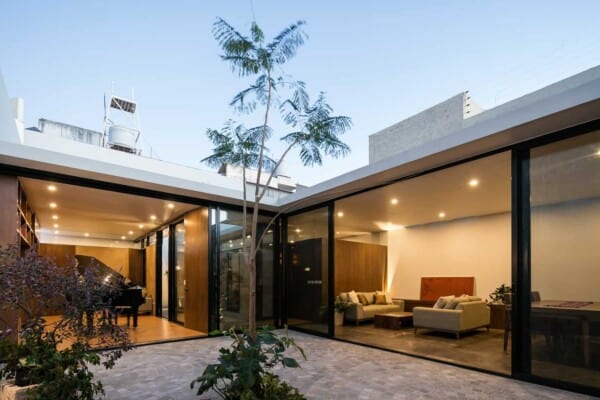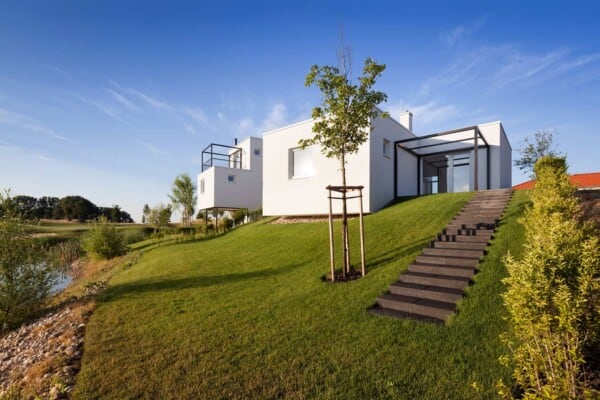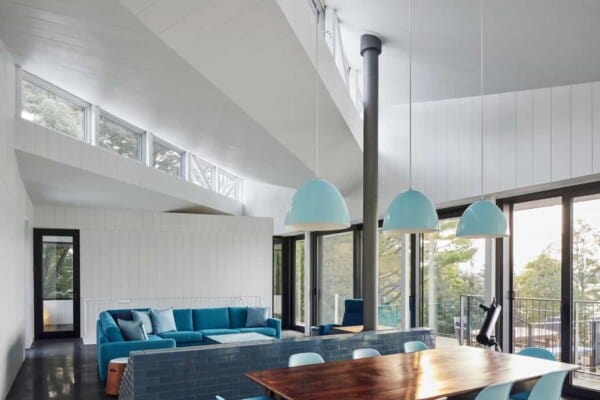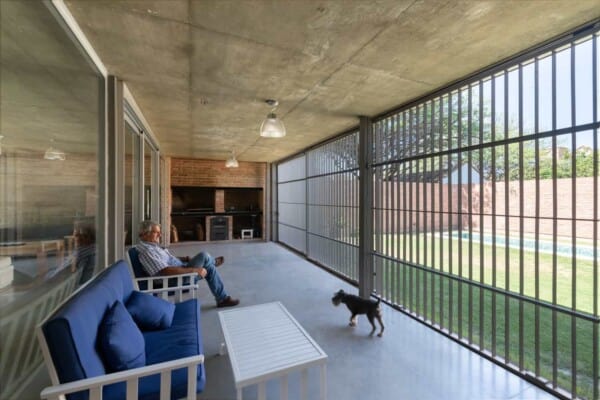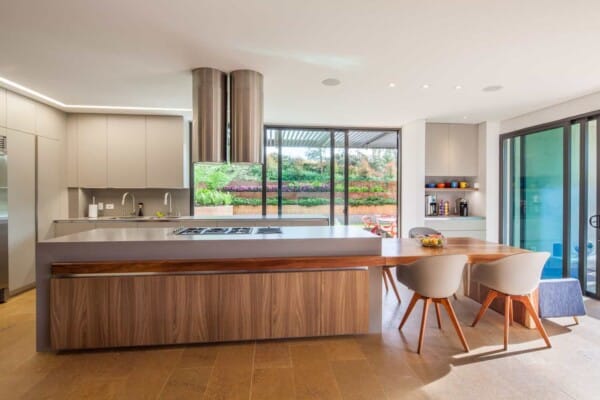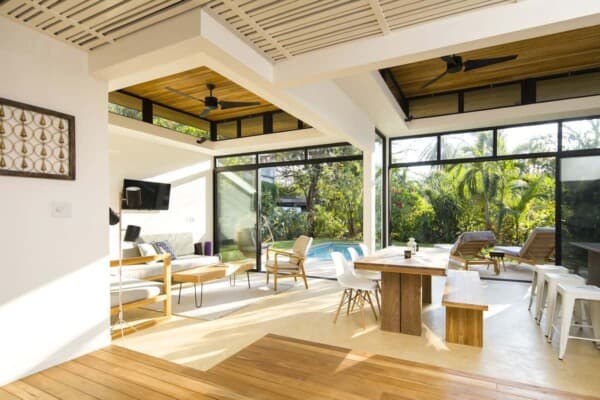New-York-based Cooper Joseph Studio has designed this tiny guest house on an impressive site overlooking the Dry Creek Valley near Sonoma, California.
The 850 square foot one bedroom one bathroom house, marked by a concrete wall running the length of the plan, won the 2011 “Custom Home of the Year” award from Custom Home magazine.
Small House by Cooper Joseph Studio:
“Design process: Background and Project Description
This agricultural property in Sonoma is owned by two scientists. The husband often works inside, but also prefers alternative work locations where for his laptop computer. The wife is involved with a number of agricultural projects, keeping olive orchards, harvesting olives and making olive oil; bee keeping; extensive gardening and various other endeavors that take advantage of Sonoma’s beautiful climate, soils and siting. Embracing the “locavore” movement, the wife brings her olives and honey to local markets and restaurants.
The 25-acre site of the original house had no real infrastructure and met none of the new code requirements for water conservation and fire safety, and did not provide adequate power for farm use. The client requested a new structure that would take advantage of the site’s hillside views, while reflecting their modest lifestyle so deeply engaged with outdoor life. They also requested that the new structure be “off the grid”, with all utilities buried, and that site improvements be implemented to avoid erosion.
Program and Spatial Development
The house, only 850 square feet, is situated towards the top of an olive orchard. The siting takes advantage of the prevailing breezes and shade, while utilizing an existing open area so that no trees were removed. The goal was to create an energy efficient, compact dwelling where the clients could sit in shady areas, entertain, and enjoy views across the local agricultural lands.
Our clients were more responsive to physical models than renderings. We therefore created an extensive series of paper/wood studies showing varied types of architectural responses as we honed the design. The structure is anchored to the site’s steep hillside with a series of retaining walls and cascading exterior decks, each linked to an interior space. The images of the models show iterations of the cascading terrace strategy with a series of studies of the hillside in relation to interior and exterior fluidity at every level. The most ambitious concept was simultaneously the least intrusive to the natural topography: circulation always directs the user to the view, while the fenestration favors soft northern light.
Environment and Structure
The house balances soft textures and grey tones with bold dramatic forms and select moments of color. Nestled into a field of (recently planted) lavender, the Small House has an all-seasons tempering microclimate. In addition to the lavender on the south and west, native grasses and varieties of rosemary maintain this native, reductive palette both inside and out. The lavender hums with bees, as this is a primary food source for their hives.
Poured-in-place concrete anchors the design physically and aesthetically (the central wall was an extremely complex pour on such a steep site). Two-inch recesses and larger openings in the concrete wall form places for sliding doors and hardware. An entry door that is flush when fully opened, and the opening for a lower-level window seat add additional detail, texture, and a reading of the program on the façade. These details provided challenges for the proper consolidation of the concrete: the immense scaffolding required to create the continuous pour provoked comparisons to building a Roman theater, but we were able to achieve superb material quality. Together with the client, contractor, and our office, we fine-tuned the orientation with a series of mock-ups. The clients spent every weekend on the site (as we juggled places for them to sleep), enjoying a superb relationship with the builder from the beginning to the end. The builder’s expertise with varied materials and attention to detail made possible this type of highly precise, finely crafted architecture.
Layout and materials
The house is organized on three levels that descend with the hillside. The entry level contains a full hallway bath as well as a bedroom with a bathroom and balcony. The mezzanine contains the kitchen and an eating counter, with a direct connection to a dining deck at the same level. On the lower level is the living room at grade with an adjacent deck. Floors, steps, and wall tile are a soft grey limestone. The woodwork is oak, stained grey with inserts of clear acrylic resin. The resin catches sunlight as it moves across the cabinetry face. The metal is painted steel and the countertops a grey eco-composite.
The exterior is predominantly light-grey zinc expressed in horizontal panels with 3/8” joints running horizontally and overlapping joints in the vertical direction. There are some minimal areas of redwood, stained grey as a detail on the south and east facades. The window system is custom, with steel mullions painted grey to match the zinc. Slatted, redwood sunscreens for the bedroom and entry deck provide texture, privacy, and shading. Horizontal skylights over the stair bring daylight to the interior while mitigating heat gain with a ceramic frit.
Furnishings are mostly custom built-in pieces as the room dimensions are small, and space must be used in a highly efficient manner. A more luxurious, large shower with 10-foot high glass overlooking the hillside, celebrates the view, and brings the outside indoors as a part of the residents’ functional lives.
The house is at once grand and intimate. We concentrated the limited square footage in a few select areas so that each actually seems quite generous. There are openings between levels so that one is able to converse easily and experience the view from a series of places within the house, from a secret window seat with a sliver window to the north to the large expansive view from the living room. Details like hidden closets and storage recesses are meant to delight the user with the confluence of efficiency and aesthetics.
Earthquake and engineering
The curtain wall details include cantilevered corners and open glass-on-glass connections that required elegant solutions to the issues of horizontal forces, heat transfer, condensation, and other environmental issues.”
Photos by Elliott Kaufman
Source: Contemporist
























